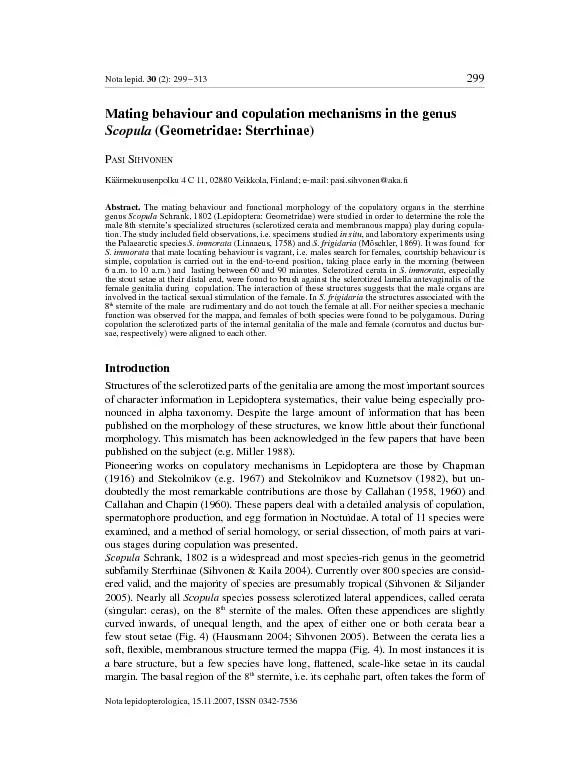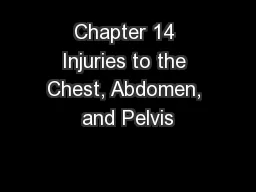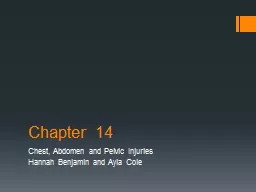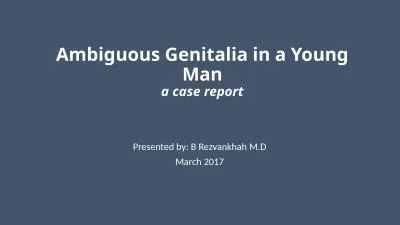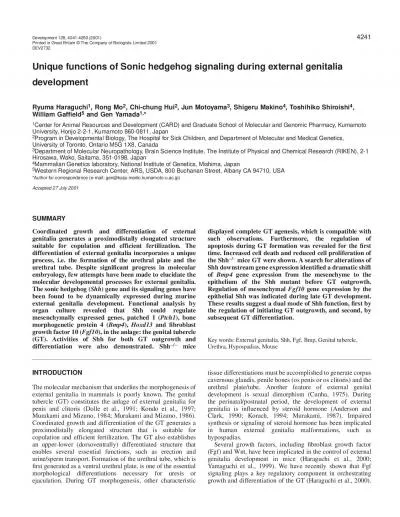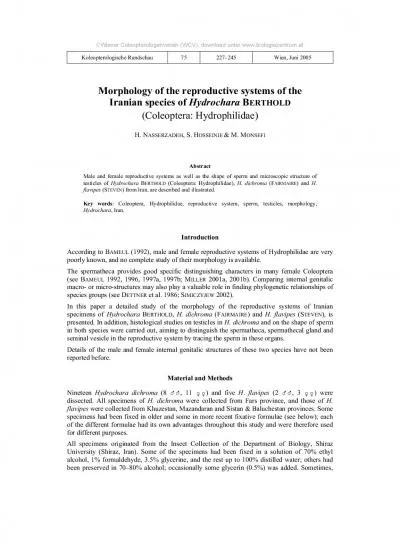PPT-Abdomen and Genitalia Injuries
Author : phoebe-click | Published Date : 2016-10-25
Chapter 28 Hollow Organs in the Abdominal Cavity Signs of Peritonitis Abdominal pain Tenderness Muscle spasm Diminished bowel sounds Nauseavomiting Distention Solid
Presentation Embed Code
Download Presentation
Download Presentation The PPT/PDF document "Abdomen and Genitalia Injuries" is the property of its rightful owner. Permission is granted to download and print the materials on this website for personal, non-commercial use only, and to display it on your personal computer provided you do not modify the materials and that you retain all copyright notices contained in the materials. By downloading content from our website, you accept the terms of this agreement.
Abdomen and Genitalia Injuries: Transcript
Chapter 28 Hollow Organs in the Abdominal Cavity Signs of Peritonitis Abdominal pain Tenderness Muscle spasm Diminished bowel sounds Nauseavomiting Distention Solid Organs in the Abdominal Cavity. Diagnostic genitalia. Sperm competition Odonata . Calopteryx. Nerve and sensory systems: signal generators, signal . receivers. Giant neurons. Cricket sound generation. Cricket sound localization. Diagnostic animal genitalia. Chapter 28. Hollow Organs in the Abdominal Cavity. Signs of Peritonitis. Abdominal pain. Tenderness. Muscle spasm. Diminished bowel sounds. Nausea/vomiting. Distention. Solid Organs in the Abdominal Cavity. Examination of the Abdomen. Ensure the patient is lying flat (remove any extra pillows ,if present ,with the permission of the patient);the hands should lie by his or her side with the abdomen exposed from the inframammary region to just above the genitalia.do not expose the genitalia .. 301Nota lepid. (2): 299 Anne Reynolds Tessa . Coan. . Josh . Werema. Table 2. What is Ambiguous Genitalia?. Ambiguous Genitalia is diagnosed at birth or in the weeks following. It is the deformity of the external genitalia. Doctors have difficulty differentiating between the male and female sex organs. Usually this is caused by a hormone imbalance in the body.. Chapter 14. Abdominal Pain. Common complaint. Cause is often difficult to identify; not necessary to determine cause. Need to recognize life-threatening problems and act swiftly. Anatomy of the abdomen:. Since the chest, abdomen, and pelvis contain many organs important to life, injury to these areas can be fatal.. . Chest injuries are a leading cause of trauma deaths each year.. Common types of injuries include rib fractures and puncture wounds.. Naher. FY1. Learning Objectives. Causes of an acute abdomen. Differential Diagnosis. Hx. /Exam. Investigations. Management. Clinical Cases. Causes of Acute Abdomen. Intestinal. Acute appendicitis. , mesenteric adenitis, . Hannah Benjamin and Ayla Cole. Vocabulary. Chest. - Upper part of the torso that contains the heart, lungs and major blood vessels.. Abdomen- . The middle section of the torso that contains the stomach, liver, spleen and intestines.. a case report. Presented by: B . Rezvankhah. M.D. March 2017. Approximately . 1 in every . 4500 babies . has atypical (ambiguous) . genitalia. DSDs can present . in many other ways, such as . karyotype-phenotype discordance . DSD). Shridhan. A . Patil. DNB . Trainee. RCC, Trivandrum. 06 . December. 2011. Disorders of Sexual Development (DSDs). Terminology. Chromosomal sex . Describes X and/or Y complement . Determined at fertilization. Coordinated growth and differentiation of externalgenitalia generates a proximodistally elongated structuresuitable for copulation and efficient fertilization. Thedifferentiation of external genitalia ASSERZADEH et al.: Reproductive systems of the Iranian species of Hydrochara (HYDROPHILIDAE) copulatrix was cleaned of muscles and connective tissues, washing with distilled water, and stored in glyce Naami. FRCSC, FACS, M Ed.. Department of Surgery - Course . 351 Surgery. Objectives. Define acute abdomen. Describe a general approach to acute abdomen. Discuss common causes of acute abdomen through case scenarios.
Download Document
Here is the link to download the presentation.
"Abdomen and Genitalia Injuries"The content belongs to its owner. You may download and print it for personal use, without modification, and keep all copyright notices. By downloading, you agree to these terms.
Related Documents




